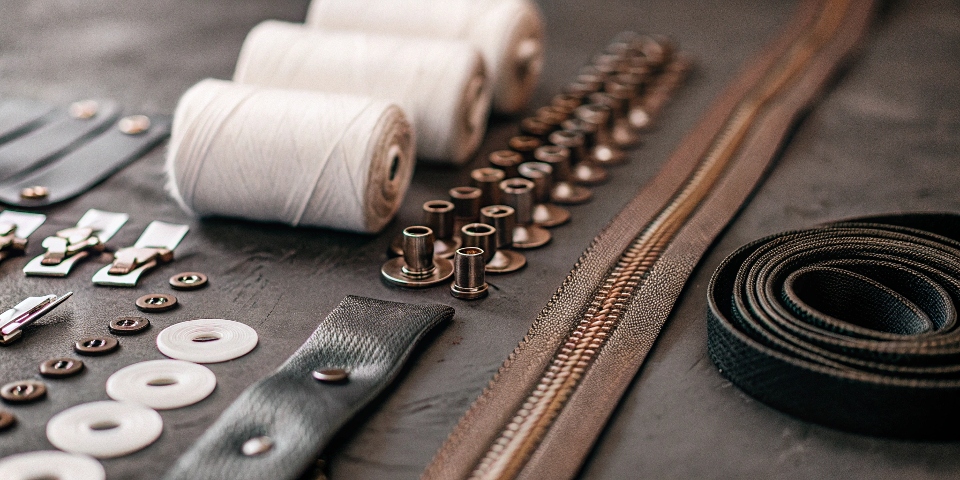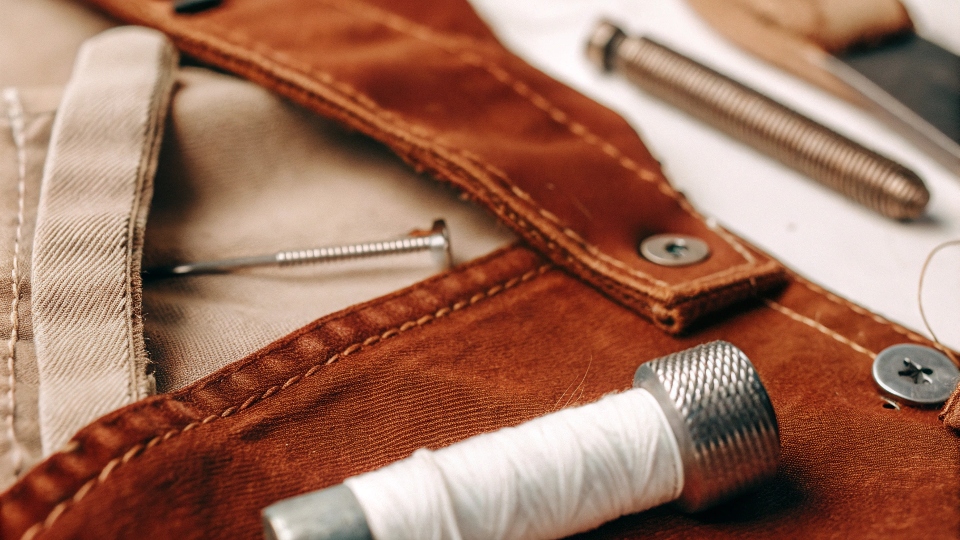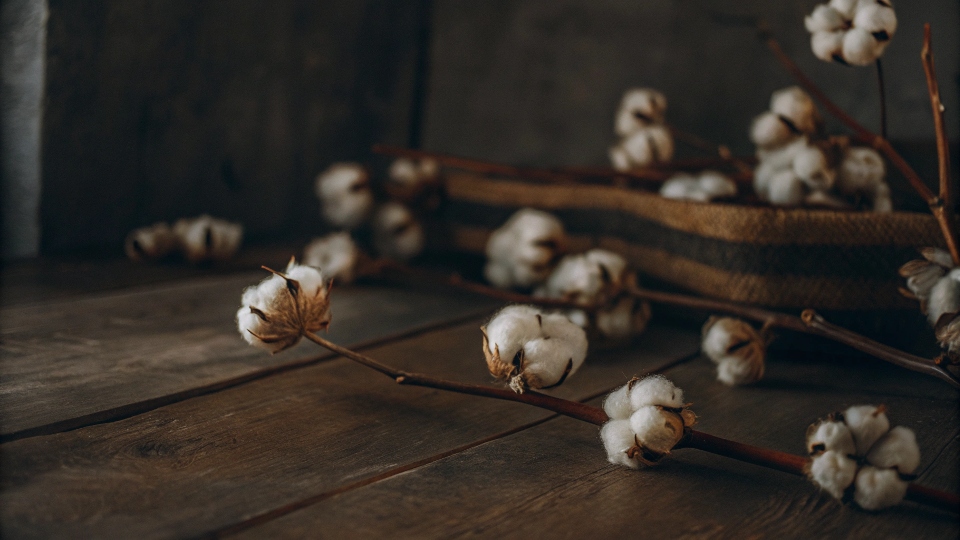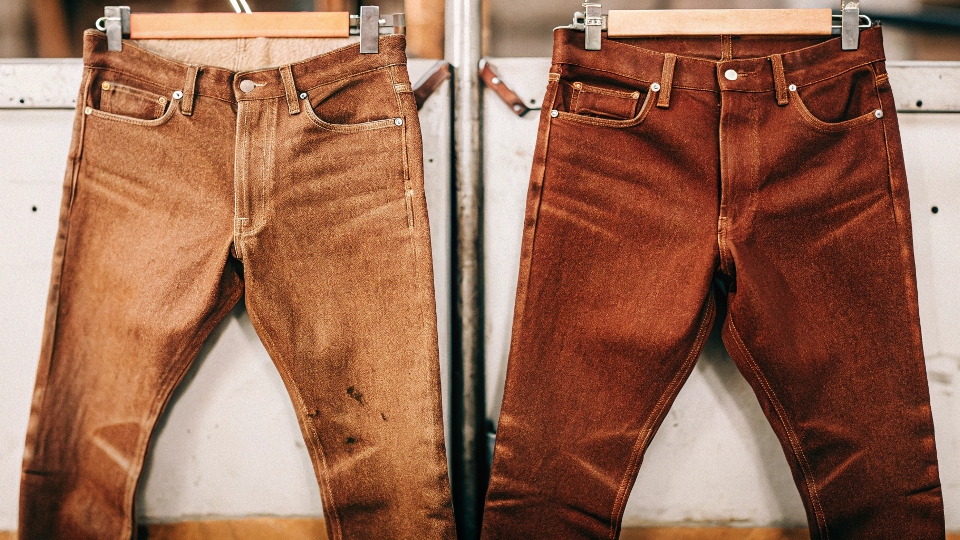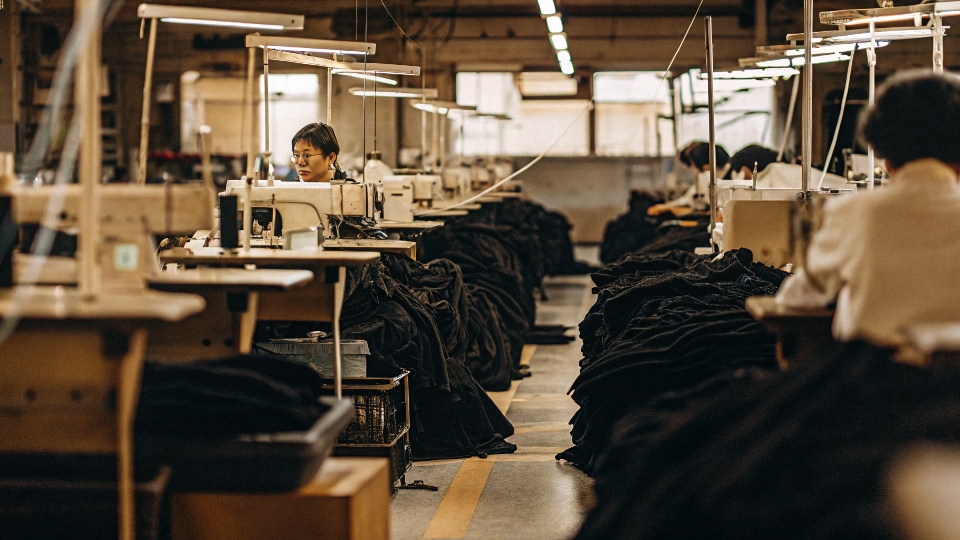You think you know what jeans are made of: just denim, right? But when you start designing, you realize this simple view is holding you back. Overlooking the small details—the thread, the rivets, the zipper—can lead to a final product that looks cheap or fails completely.
The essential raw materials required for making denim jeans are the denim fabric1 itself, various metal hardware components like buttons, rivets, and zippers, and the specialized sewing thread that holds the entire garment together.
From my factory floor, I see these components come together every single day. A designer might send me a tech pack2 that just says "denim fabric," but the conversation has to go much deeper. Is it 100% cotton or stretch? What's the weight? What kind of hardware finish do you want? Each of these choices is a lever you can pull.
They don’t just affect the cost; they define the final garment's character, its durability, and how it feels to the person who wears it. Understanding this complete "bill of materials" is the first step from being a designer to being a creator of truly great jeans.
What are the core components of a pair of jeans?
You've sent a tech pack to a potential factory partner. You think it's complete, but they email back asking about the thread ticket number and rivet alloy. Suddenly, you feel like you've missed a critical step and don't speak the language of production.
The core components of any pair of jeans fall into three non-negotiable categories: the fabric (the denim itself), the hardware (all the metal trim), and the thread. A professional tech pack must include detailed specifications for every item within these groups.
From my two decades of experience at DiZNEW, the best brand partners are the ones who understand this breakdown. It's the language we use to turn a drawing into a physical product. Thinking in these three categories makes your communication precise and professional.
It ensures that there are no surprises and that the jeans you envisioned are the jeans we deliver. A designer like Dean doesn't just design a shape; he specifies every single piece of the puzzle. Let’s break down that puzzle so you can build your next great design with complete confidence.
The Bill of Materials
| Component Category | Key Items | Critical Decisions |
|---|---|---|
| Fabric | Denim | Weight, stretch percentage3, cotton type (e.g., BCI), weave. |
| Hardware | Buttons, Rivets, Zippers | Material (brass, copper, zinc alloy), finish (e.g., antique silver), brand (e.g., YKK). |
| Thread | Topstitching, construction seams | Color, thickness (ticket size), material (poly-core for strength). |
What is the primary material used to make jeans?
Everyone knows jeans are made from "denim," but that word is just the beginning of the story. Simply saying "denim" to a manufacturer is like asking a chef to "make food." It hides the most important details that separate a cheap pair of jeans from a premium one.
The primary material used to make jeans is cotton. This natural fiber is spun into yarn, dyed (traditionally with indigo), and then woven into the strong, diagonal-lined twill fabric known as denim. Its unique combination of strength and comfort is what makes it ideal.
Cotton is the heart and soul of a pair of jeans. But at my factory, the conversation about cotton is never simple. We discuss the type of yarn first. Is it ring-spun, which is stronger, more irregular, and creates more beautiful fades over time? Or is it open-end yarn, which is more uniform and cost-effective?
Then we talk about the weave, almost always a 3x1 twill that creates that classic diagonal texture. The most important question in the modern market is about stretch. For a vintage, rigid feel, we use 100% cotton. But for most modern fits, especially for women's jeans or skinny styles for men, we blend in 1-3% elastane (like Lycra).
This small addition completely transforms the fabric, providing comfort and shape retention that today's customer demands. The choice between 100% cotton and a stretch blend is one of the first and most important decisions you'll make.
| Fabric Type | Best For | Key Characteristic |
|---|---|---|
| 100% Cotton Denim | Authentic, vintage-inspired, workwear | Rigid, durable, breaks in over time. |
| Stretch Denim | Skinny fits, fashion styles, comfort | Flexible, retains shape, comfortable from first wear. |
What material is raw denim?
You hear denim purists and high-end designers talking about "raw denim4" and "selvedge." These terms sound premium and authentic, but you're not entirely sure what they mean. You worry that it might just be marketing jargon, but also that you're missing out on a key quality signal.
Raw denim is simply denim fabric that is completely unwashed and untreated after it comes off the loom. It is stiff, dark indigo, and serves as a blank canvas that will fade and crease over time based on the individual wearer's life and body.
The name says it all: it’s raw. At my factory, the vast majority of jeans we produce go through an extensive washing and finishing process. We use stones, enzymes, and water to soften the fabric and create a pre-worn, faded look. Raw denim skips that entire expensive and time-consuming stage.
It’s denim in its purest, most authentic state. The appeal for denim lovers is that they become the artist. The fades that develop—the "whiskers" across the lap and the "honeycombs" behind the knees—are 100% unique to them. It's a personal journey. It’s also important to know that raw is not the same as selvedge. "Raw" describes the finish (unwashed).
"Selvedge" describes the edge of the fabric (produced on an old-style shuttle loom). While many selvedge jeans are sold raw, you can have non-selvedge raw denim, and you can have selvedge denim5 that has been washed.
What resources are needed to make jeans?
You've figured out your fabric, buttons, and thread. You think you have the full picture. But you're forgetting the massive "invisible" resources that are essential to production: water, energy, and human skill. Ignoring these leads to a shallow understanding of cost and sustainability.
Beyond the physical materials, making jeans depends on three vital resources: water for growing cotton and finishing, energy to run the factory, and most importantly, the skilled labor of the people who cut, sew, and finish each garment.
Thinking about these resources separates an amateur from a professional. For decades, making jeans used an enormous amount of water, especially in the washing stage to get those faded looks. Today, a responsible factory like DiZNEW focuses on conservation. We've invested in technologies like ozone washing and lasers that can create distressed effects with a fraction of the water.
Energy is another huge factor; it powers our cutting tables, our rows of sewing machines, and our industrial dryers. Efficient, modern equipment doesn't just lower our costs; it lowers our carbon footprint. But the most important resource is human skill. A machine cannot create a perfect jean.
It takes the hands of a skilled operator to guide fabric through a sewing machine for a perfectly straight seam, and the eye of an artisan to hand-sand a jean for a natural-looking fade. These skills are a critical, irreplaceable raw material.
Conclusion
Creating great jeans requires mastering all the raw materials: the core components of fabric, hardware, and thread, plus the vital resources of water, energy, and irreplaceable human skill.
-
Explore the intricacies of denim fabric to understand its quality and characteristics. ↩
-
Understand the importance of a tech pack in ensuring precise communication with manufacturers. ↩
-
Learn how stretch percentage affects comfort and fit in denim jeans. ↩
-
Understand the unique qualities of raw denim and its appeal to denim enthusiasts. ↩
-
Explore the characteristics of selvedge denim and its craftsmanship. ↩

